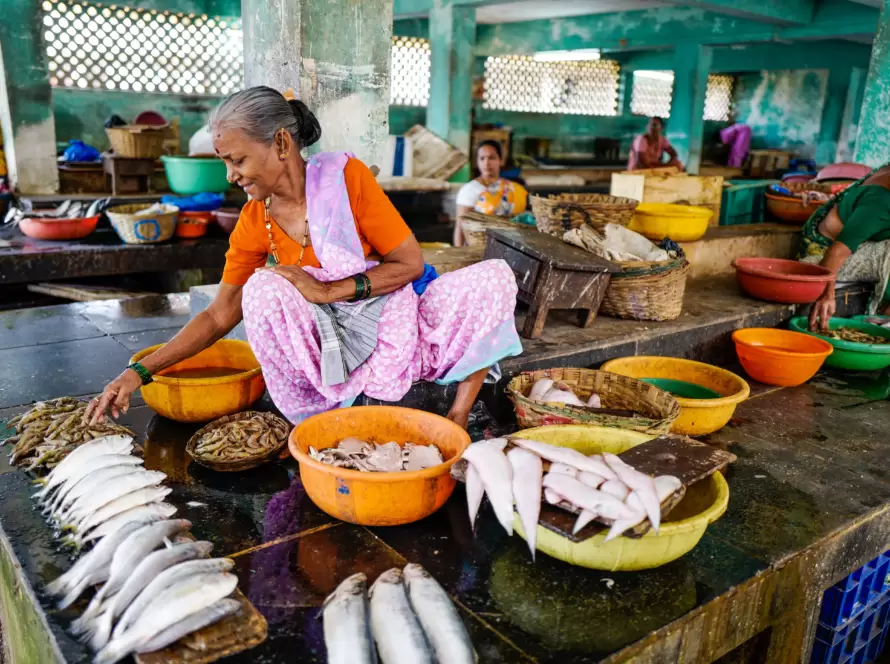Published by Contentify AI
- Challenges in Rural Development
- Government Initiatives
- Key Players in Rural Development
- Success Stories

Key Takeaways
- Several rural development initiatives have been implemented in India to address the challenges faced by rural communities.
- These initiatives focus on areas such as infrastructure development, poverty alleviation, agricultural growth, and skill development in rural areas.
- Government schemes like the National Rural Employment Guarantee Act (NREGA) and the Pradhan Mantri Awas Yojana (PMAY) have been instrumental in driving rural development in India.
Challenges in Rural Development
Rural development in India faces a multifaceted set of challenges. One of the primary concerns is the lack of infrastructure, which includes inadequate access to clean water, electricity, and road connectivity. These basic necessities are crucial for the overall development of rural areas but remain scarce in numerous parts. Additionally, the quality of education and healthcare services in rural regions lags significantly behind urban standards, contributing to a cycle of poverty and underdevelopment.
Agricultural issues also pose significant hurdles. Despite the majority of the rural population depending on agriculture for their livelihood, productivity remains low due to outdated farming techniques, limited access to modern technology, and erratic weather patterns exacerbated by climate change. Furthermore, the small landholdings and fragmented farms reduce the efficiency of agricultural practices, making it difficult for farmers to scale operations or increase income.
Financial inclusion is another critical challenge. Many rural inhabitants lack access to formal banking and credit facilities, hindering their ability to invest in businesses or agriculture to improve their economic standings. This situation is aggravated by a lack of financial literacy, leaving a significant portion of the rural population vulnerable to exploitation or unsustainable debt.
The socio-economic divide is evident not only in economic terms but also through a persistent gender gap in education, employment, and decision-making processes. Women and marginalized communities in rural areas face additional barriers that prevent them from accessing the same opportunities as their urban or male counterparts, perpetuating social inequities and limiting overall community development.
Addressing these challenges is essential for the success of Rural Development Initiatives in India, requiring concerted efforts from the government, non-governmental organizations, and the communities themselves to create sustainable and inclusive growth paths for rural areas.
Government Initiatives
In response to the multi-faceted challenges facing rural areas, the Indian government has launched several Rural Development Initiatives aimed at transforming rural landscapes into hubs of growth and prosperity. A flagship initiative is the Mahatma Gandhi National Rural Employment Guarantee Act (MGNREGA), designed to provide at least 100 days of skilled labor to every rural household annually, thereby ensuring employment and stimulating economic activity. Additionally, the Pradhan Mantri Gram Sadak Yojana (PMGSY) focuses on enhancing rural connectivity through the construction and rehabilitation of roads, facilitating easier access to markets, healthcare, and education.
The government’s Swachh Bharat Mission targets sanitation and hygiene issues by aiming to eliminate open defecation and improving waste management systems in rural areas. This initiative not only addresses health concerns but also promotes dignity and equality. Similarly, the National Rural Health Mission (NRHM) works towards strengthening healthcare infrastructure and providing accessible, affordable healthcare services to the rural population.
To boost the agricultural sector, which is the backbone of the rural economy, initiatives like the Pradhan Mantri Krishi Sinchayee Yojana (PMKSY) have been introduced to extend the coverage of irrigation, enhance water efficiency, and promote ‘More crop per drop.’ Furthermore, the government promotes digital literacy and financial inclusion through the Digital India campaign and the Pradhan Mantri Jan Dhan Yojana, respectively, empowering rural citizens with digital tools and access to financial services.
These initiatives underscore the government’s commitment to addressing the multifaceted challenges of rural development. By focusing on infrastructure, employment, sanitation, health, and agricultural improvements, these initiatives play a crucial role in enhancing the living standards of India’s rural population and reducing the urban-rural divide. Through concerted efforts, Rural Development Initiaries in India are steadily making strides towards sustainable development and inclusive growth in the country’s rural regions.
Domain, Web Hosting, and SEO Services
At Shakti Web Solutions, we offer world-class domain registration services at cost-effective prices. Register your domain for business identity and get fully hosted professional email solutions.
Key Players in Rural Development
Key players in the realm of Rural Development Initiatives in India encompass a broad spectrum of stakeholders, each contributing to the transformation and upliftment of rural communities. The government, at both central and state levels, spearheads numerous programs aimed at infrastructure development, poverty alleviation, and enhancement of living standards. Central government initiatives like the Swachh Bharat Mission, Pradhan Mantri Awas Yojana, and Pradhan Mantri Gram Sadak Yojana have laid a strong foundation for rural revitalization.
Non-Governmental Organizations (NGOs) play a pivotal role, complementing government efforts with community-based approaches that ensure the sustainability of development projects. These organizations work closely with rural populations to implement education, healthcare, and livelihood projects, often filling gaps left by governmental programs. Notable NGOs like the Self-Employed Women’s Association (SEWA), Pradan, and the Barefoot College focus on empowering communities from within, addressing issues like women’s rights, skill development, and sustainable energy use.
International bodies and bilateral donors also contribute significantly to India’s rural development landscape. The World Bank, United Nations Development Programme (UNDP), and various countries through their development agencies provide financial and technical assistance for rural development projects. These collaborations often focus on areas such as agricultural innovation, renewable energy, and climate change adaptation, helping India to meet its development goals while addressing global challenges.
The private sector’s involvement through Corporate Social Responsibility (CSR) initiatives has become increasingly important. Companies invest in rural areas by supporting education, healthcare, sanitation, and digital literacy projects, among others. These investments not only contribute to rural development but also help businesses build goodwill and sustainable supply chains.
Local self-governments and community organizations, including panchayats and women’s self-help groups, are the frontline actors in rural development. They ensure that the benefits of various initiatives reach the grassroots level and are tailored to meet the specific needs of their communities. Their active participation ensures accountability, promotes democratic decision-making, and empowers rural citizens.
Through the collaborative efforts of these key players, Rural Development Initiatives in India have witnessed significant progress. Success stories of transformed villages and empowered communities underscore the collective impact of government policies, NGO projects, international partnerships, corporate investments, and local leadership in driving sustainable development across rural India.
Related articles
Success Stories
Success stories stemming from Rural Development Initiatives in India offer inspiring glimpses into the transformative power of targeted efforts in uplifting rural communities. One notable example is the transformation of the village of Punsari in Gujarat. Once a nondescript settlement, Punsari is now dubbed a ‘model village,’ thanks to comprehensive development projects that include solar-powered streets, Wi-Fi, biometric-equipped schools, and healthcare facilities that rival urban centers. This remarkable turnaround was achieved through effective utilization of government schemes coupled with active community participation.
Another success story is the village of Hiware Bazar in Maharashtra, which emerged from the throes of drought and poverty to become a symbol of prosperity and self-sufficiency. Under the leadership of a visionary local head, the village adopted integrated water conservation measures, including rainwater harvesting and the construction of percolation tanks, significantly enhancing agricultural productivity. Hiware Bazar’s model of sustainable development, focusing on natural resource management and community engagement, has been replicated in other regions, showcasing the scalability of successful rural initiatives.
In the realm of digital literacy, the Digital Saksharta Abhiyan (DISHA) has made profound impacts in rural districts across India. By providing access to digital education and resources, the initiative has empowered rural citizens, enabling them to participate in the digital economy and access government services online. Stories of individuals starting online businesses or securing employment through digital platforms highlight the initiative’s role in bridging the digital divide.
The transformation of Khonoma village in Nagaland into India’s first ‘green village’ stands as a testament to the power of environmental conservation efforts. Through community-led initiatives to preserve local biodiversity and promote sustainable practices such as terrace farming and rainwater harvesting, Khonoma has become a beacon for eco-tourism and conservation, generating sustainable livelihoods while protecting its natural heritage.
These success stories, among numerous others, reflect the multifaceted approach of Rural Development Initiatives in India. By addressing the unique needs of each village through a combination of technological innovation, environmental conservation, and community empowerment, these initiatives demonstrate the potential for holistic rural development. They serve as beacons of hope and models for replication, underscoring the significant strides made in transforming rural landscapes and improving the lives of India’s rural population.






